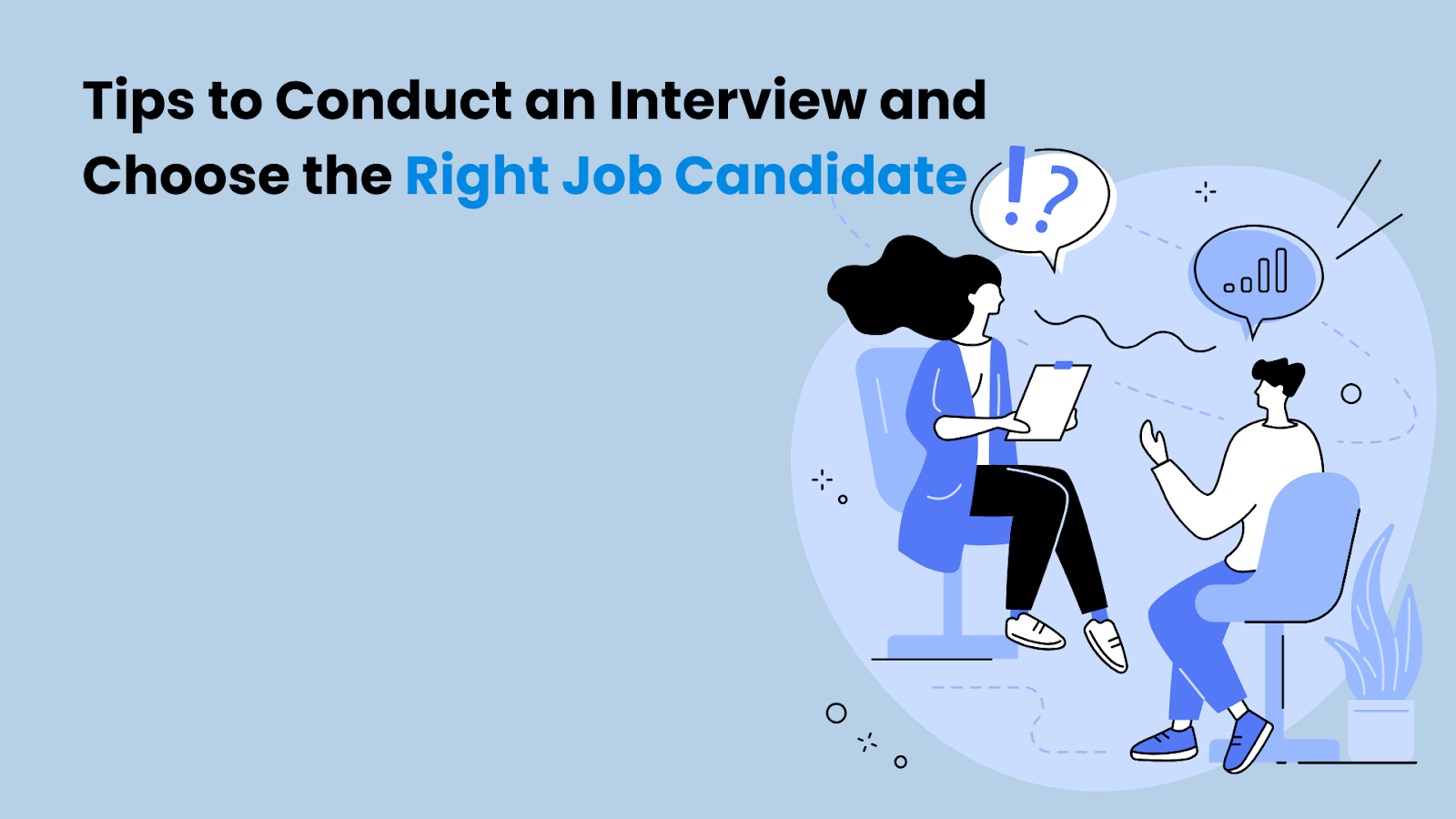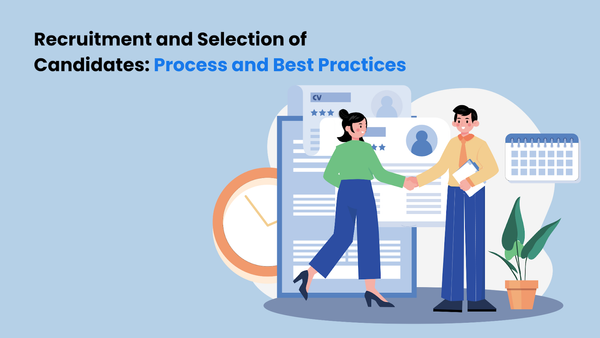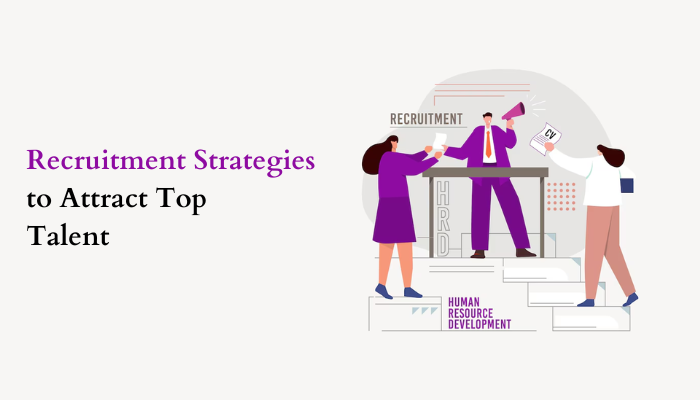Hiring the right person is one of the most critical decisions for any organization. A great hire doesn’t just fill a position. They contribute to team dynamics, bring innovative ideas, and help drive success.
However, finding the perfect candidate requires more than reviewing resumes and asking standard questions. It demands a structured approach to interviewing and evaluation.
Knowing how to choose the right candidate for the job is a vital skill for hiring managers and recruiters. It requires a mix of preparation, insight, and strategy to identify individuals who align with both the role’s demands and the company’s goals.
Hiring the wrong person can lead to wasted resources, low team morale, and lost productivity. On the other hand, selecting the perfect fit can drive innovation, foster collaboration, and contribute to long-term success.
This blog will guide you through the essential tips for conducting an effective interview, key strategies to assess candidates thoroughly, and actionable advice on making informed decisions when hiring.
Before jumping into the interview process, let’s first explore what it means to find the ‘right’ candidate for your team.
What Makes a Candidate the "Right" Fit?
Before diving into the interview process, it's crucial to understand what defines the "right" candidate. The right candidate not only possesses the necessary skills and experience but also aligns with your company’s values and culture. They should demonstrate the potential to grow within the organization and contribute positively to the team dynamic.
Key Attributes of the Right Candidate
- Relevant Skills and Experience: Meets the job requirements and has the technical skills needed.
- Cultural Fit: Shares the company’s values and can thrive within its work environment.
- Adaptability: Capable of adjusting to new challenges and changes within the organization.
- Problem-Solving Ability: Demonstrates critical thinking and the ability to tackle issues effectively.
- Strong Communication Skills: Can articulate ideas clearly and collaborate with others.
Understanding the impact of hiring decisions highlights why it’s essential to find the best match for your organization.
Importance of Choosing the Right Candidate
Hiring the right candidate goes beyond filling a vacancy. It impacts team morale, productivity, and the overall success of your organization. Here’s why it’s essential:
- Enhanced Productivity: The right candidate can perform tasks efficiently and contribute to achieving business goals.
- Lower Turnover Rates: Employees who fit well are more likely to stay, reducing the costs and disruptions associated with high turnover.
- Positive Work Environment: A harmonious team dynamic fosters collaboration and innovation.
- Cost Efficiency: Avoiding bad hires saves recruitment costs and minimizes the time spent on training and onboarding.
- Company Growth: Talented employees drive growth by bringing fresh ideas and improving processes.
Recognizing the significance of selecting the right candidate underscores the need for a thorough and strategic interview process.
Now that we know why it matters, here are some tips to help you pick the best candidate.
Tips on How to Choose the Right Candidate for the Job
1. Prepare Thoroughly Before the Interview
Preparation is the foundation of a successful interview process.
- Define the Role Clearly: Craft a detailed job description that highlights the responsibilities, skills, and traits required for success.
- Efficient Candidate Sourcing: Utilize Tidyhire’s AI-powered candidate sourcing to access a vast database of over 700 million professionals, streamlining the identification of qualified candidates.
- Structure the Process: Prepare consistent questions to evaluate both technical skills and cultural fit.
Preparation ensures you approach the interview with clarity and focus, leading to better decision-making.
2. Ask Behavioral Questions
Behavioral questions help you understand how candidates have handled situations in the past, providing insights into their problem-solving abilities, teamwork, and adaptability. Examples include:
- "Can you describe a time when you had to overcome a significant challenge at work?"
- "How do you handle tight deadlines and pressure?"
Consider using Tidyhire’s AI-assisted email and LinkedIn message writing to craft personalized outreach, enhancing candidate engagement.
3. Assess Cultural Fit
- Evaluate Alignment: Discuss values and work preferences to ensure compatibility with company culture.
- Automated Engagement Sequences: Consider using Tidyhire’s automated and personalized engagement sequences to maintain consistent communication, reflecting your company’s culture and values.
Choosing someone who aligns with your company’s values often leads to better collaboration and satisfaction.
4. Incorporate Practical Assessments
Testing a candidate’s skills helps validate their abilities beyond what’s written on a resume.
- Technical Tasks: Assign real-world challenges relevant to the role.
- Soft Skills Exercises: Use role-playing scenarios to assess communication or leadership abilities.
- Simplify Evaluations: can help facilitate practical tests or gather feedback from multiple interviewers in one place.
These steps help you make more objective decisions based on demonstrated performance.
5. Check References
Contacting previous employers or colleagues can provide additional perspectives on the candidate’s performance, reliability, and interpersonal skills. Reference checks help verify the information provided during the interview.
6. Use Multiple Interviewers
Involving different team members in the interview process brings diverse viewpoints and helps in making a more balanced hiring decision. It also ensures that the candidate is evaluated from various angles.
7. Consider Soft Skills
Soft skills such as communication, leadership, and emotional intelligence are crucial for long-term success. Assess these skills through situational questions and by observing the candidate’s interactions during the interview.
8. Develop a Scorecard for Consistency
- Create a structured scorecard to evaluate candidates on key competencies and traits.
- Assign weights to each category (e.g., technical skills, cultural fit, communication) to maintain consistency across interviews.
- Use the scorecard to compare candidates objectively and minimize unconscious bias.
9. Focus on Growth Potential
- Look for candidates who show a willingness to learn and adapt.
- Ask questions such as, “Tell me about a new skill you’ve recently acquired” or “How do you approach professional development?”
- Hiring for potential, rather than just current skills, ensures the candidate can grow with your organization.
10. Don’t Rush the Process
- Take your time to evaluate each candidate thoroughly.
- Rushed decisions often lead to hiring mismatches that can be costly in the long run.
By following proven best practices, you can refine your hiring process and consistently find top talent.
Conclusion
Choosing the right candidate for the job is more than matching skills to a job description. It’s about finding someone who will thrive in the role, align with your company’s values, and contribute to your organization’s long-term goals. You can build a strong, cohesive team by preparing thoroughly, asking insightful questions, assessing cultural fit, and incorporating practical assessments.
Tidyhire can further streamline and enhance the hiring process. From sourcing top talent to managing candidate data and communications, these features allow you to focus on evaluating and selecting the best fit.
Ready to take your hiring process to the next level? Explore how Tidyhire can help you find and choose the right candidate for the job. Book a call with us to learn more and start transforming your recruitment process today!



